Disciple: Just a Closer Walk with Thee
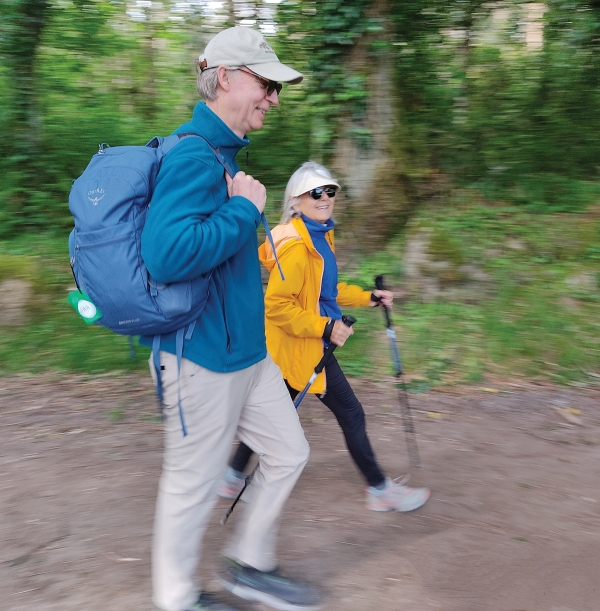
Bishop Sam goes on sabbatical
By Bishop Sam Rodman
Pilgrimage has a long-standing tradition in the spiritual practices of faithful followers of Jesus. The practice cuts across geographic, cultural, ethnic, political and, ultimately, even religious lines. Pilgrimage is one of the central tenets of Islam. A pilgrimage to Jerusalem is part of Jewish piety. Buddhism and Hinduism have pilgrimages as part of their tradition. Then there is the well-known African proverb: “When you pray, move your feet.” The Aboriginal people of Australia practice what we have come to call in English “walkabouts.” And in The Episcopal Church, we have even adopted this language for the discernment process when a diocese calls a bishop.
Pilgrimage is one of the ways we seek to reconnect: with the loving God who made us, with the teaching of Jesus (for those of us who are Christian), with the promises that call to us, and with the movement of the Holy Spirit that shapes and directs our lives and faith journeys. Stevie Wonder had a song in the 1970s entitled “Go and Have a Talk with God.” But for me, when I am feeling out of touch, out of sorts or in need of some redirection, I have always turned to the invitation to “go and have a walk with God.”
[Image: Bishop Sam Rodman and his wife, Debbie, walk the Camino de Santiago. Photo courtesy of Fresco Tours]
ENCONTRANDO MI VOZ (FINDING MY VOICE)
During my three-month sabbatical from late March to late June, this theme of walking with God on pilgrimage was part of what anchored and oriented my time away. It all built toward the two weeks at the end of May when my wife, Debbie, and I walked the Camino de Santiago in Spain. But the walking began long before the actual journey on the traditional French route through Gallacia. To get in shape, we began daily walks here in Raleigh, anywhere from two to five miles each day.
The other focus of my time away was to try and learn Spanish and become more comfortable and proficient leading the liturgy in Spanish. This included a five-week immersion program with Language Plus, a school based in El Paso, Texas. I spent one week online, then two weeks in El Paso, finishing with two more weeks online when I returned home.
Learning Spanish was also part of the Camino journey, not only because it was a great opportunity to practice the language but because it is connected to the longer arc of my time serving as your bishop. I made a promise to myself and to all y’all that this would be a priority for me here, and the gift of a block of time freed from the constraint of my normal schedule became a golden opportunity to go deeper with this intention.
It was not without its challenges. While I have studied and had some success with French, Greek and Hebrew, I have always struggled with speaking another language. When I took French in high school, I learned to write, read and translate, but I became tongue-tied whenever I tried to carry on a conversation or dialogue. In class, I let others give the verbal responses to questions as I stayed silent.
For this reason, I chose to work with tutors for one-on-one instruction both online and in person. This meant stepping well outside of my comfort zone, but it also meant that I had no choice but to speak. I could no longer hide behind classmates. And slowly but steadily, I would say day by day, step by step, I began to find my voice, in Spanish.
I was blessed with wonderful, experienced teachers who were patient and persistent, forgiving, but also quick to correct, and who, when I drifted into English, would respond to me in Spanish and help me regain my focus.
One of my favorite discoveries was that sometimes a Spanish word holds two different meanings in English. For example, the word for sentences or exercises, as part of my homework, was oraciones. You may recognize that word, because it is also the word for prayer. The word padre, which means, of course, father, is also used to refer to a priest, as in English. But in Mexican Spanish, padre also means cool, as in “that’s cool!” I enjoyed sharing this double meaning at our Clergy Conference when I returned in June. But perhaps my favorite double-meaning Spanish word (so far), is espero, a verb that is translated as “I hope” and, also, “I wait.” The connection between hoping and waiting strikes me as both biblical and also true to our experience—“we wait in hope….”
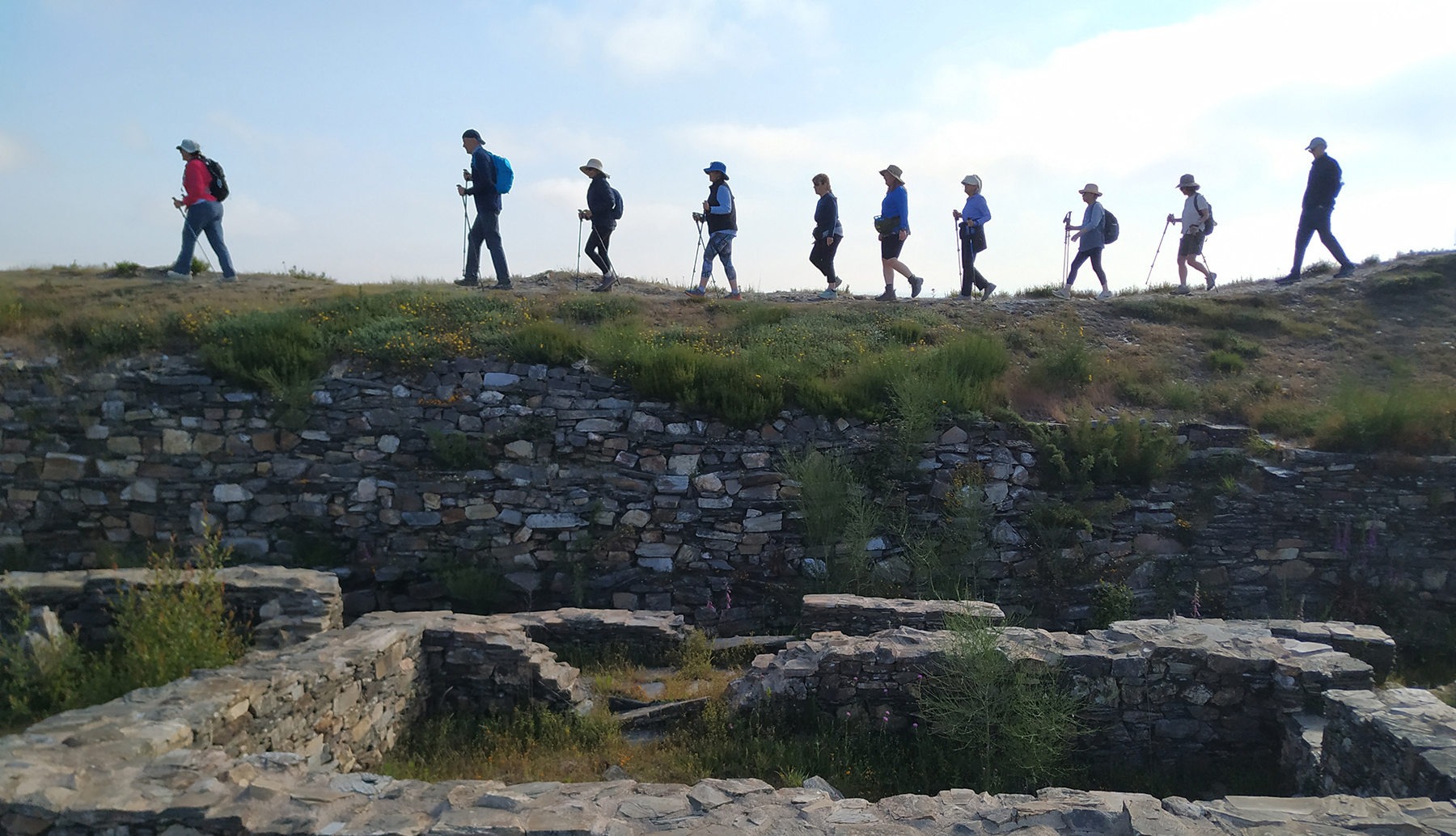
[Image: Walking the Camino. Photo courtesy of Fresco Tours]
GETTING READY
Of course, during my time in El Paso, I continued my training walks. It was a wonderful way to get to know the city and, also, El Paso’s sister city, Juarez, in Mexico. At one time in history, it was all one city separated by the Rio Grande. The river now forms the border between Mexico and the United States, but the people of both cities consider themselves bicultural, bilingual and binational.
El Paso is part of the Diocese of the Rio Grande, where Bishop Michael Hunn now serves as bishop. His canon to the ordinary, the Rev. Lee Curtis, lives in El Paso and was a great host, introducing me to both cities. I joined Curtis and his family at their church, All Saints, “where every saint has a past, and every sinner has a future,” on the one Sunday I was there.
Returning to Raleigh, I had two more weeks of online learning with a wonderful tutor from Columbia (the country, not the university). Then Debbie and I made our way to New England for a Mother’s Day visit with our daughters and my mother before flying out of Boston to Madrid.
The night before we left, we had a chance to see the movie “The Way” with Martin Sheen and Emilio Estevez, who wrote and directed the film. It is the story of a father whose son dies in a tragic accident on the Camino de Santiago and who completes his son’s journey. It had been pulled from streaming services but was re-released in theaters for one day only, so we were grateful to have a chance to see it before making our own pilgrimage.
EL CAMINO DE SANTIAGO
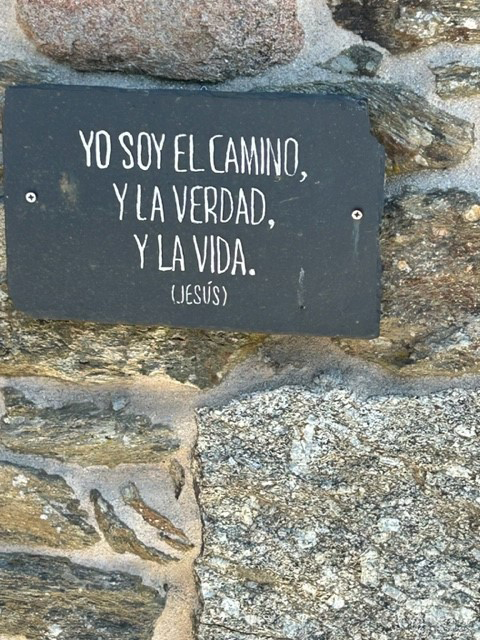
The Camino dates from the 10th century after the ninth-century discovery and papal “authentication” of the remains (relics) of St. James the Great. There are many routes representing the pilgrimages from different parts of Europe that have become popular over the centuries. We were walking the last section of the French route.
We arrived in Madrid and spent a couple of days sightseeing in the capital city while adjusting to the time change. We walked the streets and parks of that beautiful city and visited the Prado and Regina Sophia museums.
On our third day in Spain we took a train to Leon to meet our group and begin our Camino de Santiago. We were 13 pilgrims and two guides. Of the 13 pilgrims, nine were from the United States, two were from Canada and two from Madrid, or so we thought. When we spoke with the couple from Madrid the first night, we discovered they had moved to Spain only six months earlier, and before that, they had lived for 23 years…in Raleigh. Small world! There was one other Episcopalian in the group, a woman from central Florida.
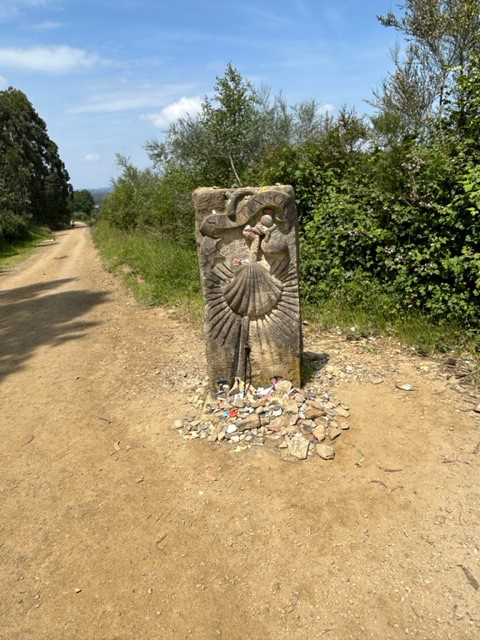
The first day we had a tour of Leon and its history, including its beautiful cathedral, Santa Maria de Regla. Our hotel was a former monastery that had been repurposed to welcome guests. Next to it was the village church. I attended the evening Roman Catholic Mass, which was filled with a mix of faithful locals and pilgrims. As we left the service, a rainbow appeared over the city. It seemed a promising sign for our camino, which began the following morning.
The highest point on the French route of the Camino is just outside of Leon and marked by a tall iron cross. It is traditional for pilgrims to leave at the foot of the cross, as a sign or a prayer for their journey, a “stone of intention” brought from home. We hiked about five miles to the site, and each of us left our stone. From there, we were driven by van to Sarria, which marks the final 100 kilometers to Santiago. Pilgrims who want a certificate at the end of their pilgrimage need to walk, at minimum, the last 100 kilometers.
We spent the next nine days making our way from Sarria to the city of Santiago, traveling about eight to 10 miles a day. Along the way we shared stories and bonded as a group, and we also connected with others along the way, fellow pilgrims who were our companions on the journey. The traditional greeting along the way is always, “Buen Camino”—good journey.
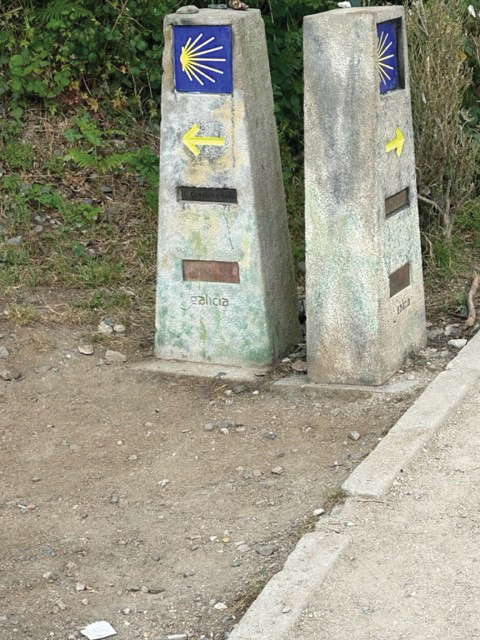
Every evening, we gathered as a group before dinner to share experiences from the day, learn local history from our guides and talk about plans for the following day. There was a wonderful blend of history, spirituality and stories from the day’s journey that helped us reflect together about the pilgrimage and build a sense of community with one another.One of the features of the Camino is the signposts and markers along the path to help pilgrims find their way. Traditionally, these markers carry a scallop shell, the ancient symbol of the Camino de Santiago, or a yellow arrow pointing to the path.
Occasionally, but more frequently than you might expect, we would find at an intersection two sign posts pointing in opposite directions. Our guides explained that the Camino is so old that there are numerous places where alternate routes were created. Often one path is shorter or may lead to small chapel along the way for reflection and prayer. The paths reunited or converged further along.
In spite of all these signs, pilgrims did occasionally miss a marker and end up going off the Camino. One afternoon, Debbie and I found ourselves on a path that took us through a local farm. As we passed the farmhouse, a woman came out and spoke rapidly in Spanish and gestured with her arms, pointing us back in the direction we came. Retracing our steps for about half a mile, we found the marker we missed and reconnected with our group.
[Images: Scenes from along the Camino de Santiago: a reminder of why pilgrims walk; the ubiquitous scalloped shell marks the path; and a fork in the road. Photos by Bishop Sam Rodman]
While phone service was spotty, I was surprised one morning to get a text from one of my teachers in El Paso. She asked if we made it to Spain, and, if so, how we were enjoying it. I replied in Spanish. She responded immediately—with grammatical and spelling corrections to my text.
There is a rhythm and cadence to the Camino that you find along the path. It tends to be slow and steady. Each day, I found myself spending some time with Debbie, some time with other pilgrims and some time alone.
I found the presence of our fellow pilgrims a powerful reminder that Jesus loves to walk with us and that Jesus invites us to walk with one another. And much of Jesus’ teaching took place as he and his followers made their way through Galilee and Judea and the surrounding regions—on foot. I even wondered if walking “the way” was, in some profound sense, connected to the way of salvation.
On the last day, we walked into the city of Santiago. In some sense, it was a sharp contrast to the beauty of the rural countryside we had passed through for most of our Camino, but it was also a reminder that the journey of faith is lived out in the grit and grime of the day to day.
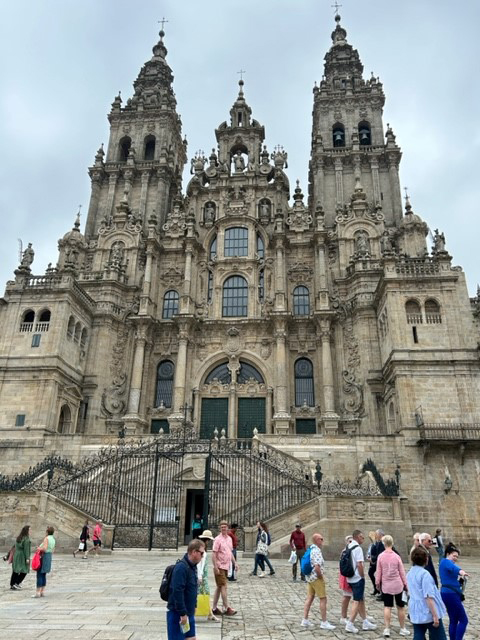
Arriving in the square of the Cathedral de Santiago was moving and joyous. There were shouts and hurrahs from various groups, and happy reunions with pilgrims met along the way. It was also bittersweet because our journey was coming to an end, and we had to say goodbye to companions we had grown close to over our 11 days together.
[Image: Cathedral de Santiago. Photo by Bishop Sam Rodman]
That evening we attended Mass at the cathedral and visited the tomb of St. James. While only Catholics were invited to receive the bread and wine, at the end of the Mass, the large, iconic thurible (reportedly the world’s largest) was used to cense the gathered congregation, adding a spirit of mystery and unity to the journey just completed.
Returning home, we found ourselves revisiting moments from the journey as we shared our experience with family, friends and, now, with all of you in our diocesan family.
Debbie and I are so grateful for the gift of this sabbatical time away. The pilgrimage at the heart of it was a journey that will continue to deepen and strengthen our faith and our sense of wonder as we connect our experience of the Camino with the journey to become beloved community that we are blessed to share with all of you in the Diocese of North Carolina. Buen Camino.
Bishop Sam Rodman is the XII bishop of the Diocese of North Carolina.
Tags: North Carolina Disciple / Formation
